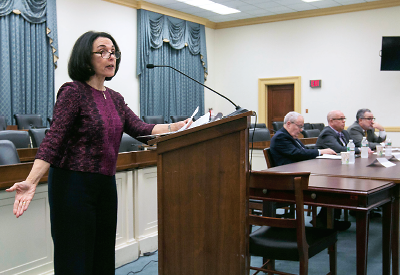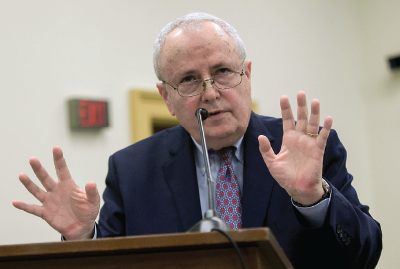Medicaid’s institutions of mental diseases (IMD) exclusion is an antiquated rule for a different era, a time before community mental health services were commonly available, but the world has changed and so should the rule, Joe Parks, M.D., director of Missouri’s Medicaid program, told congressional staffers and others at a Capitol Hill briefing on December 14.
The briefing was cosponsored by APA, the National Association of Psychiatric Health Systems, and the National Alliance on Mental Illness.
Changes in the IMD rule and the 190-day limit on Medicare coverage of psychiatric illnesses are needed to reflect the changes in mental health care over the last 50 years, said Parks and other speakers.
“For people with severe mental illness, inpatient treatment may be a necessary part of care,” said APA President Renée Binder, M.D., a professor of psychiatry at the University of California, San Francisco, School of Medicine. “Modern inpatient care is designed to evaluate and treat patients in acute moments of crisis and to prepare them for longer-term care in the community.”
The Medicaid IMD exclusion was mandated in the 1960s and came to be known as the “16-bed rule” because it excludes payments to such institutions as state hospitals, freestanding psychiatric hospitals, and community residential treatment programs with more than 16 beds for patients aged 21 to 64. The intent was to prevent states from siphoning off federal mental health funding to pay for care in larger psychiatric facilities, especially state mental hospitals.
The era of deinstitutionalization that followed moved many patients into the community, as hoped, but many of them also became warehoused in jails and prisons, said former APA President Steven Sharfstein, M.D., M.P.A., president and CEO of Sheppard Pratt Health System in Maryland.
“The rule is a major disincentive to expand facilities,” said Binder.
Although the rule was created to save money, it is both inefficient and results in lower quality of care, said Parks.
“The ideal size for a psychiatric unit is 24 beds, and smaller units can’t support the depth of staffing needed to properly care for patients,” he said.
All participants argued for passage of two comprehensive mental health reform bills now wending their way through Congress: The Helping Families in Mental Health Crisis Act (HR 2646), cosponsored by Reps. Tim Murphy (R-Pa.) and Eddie Bernice Johnson (D-Texas), and the Mental Health Reform Act of 2015 (S 1945), cosponsored by Sens. Chris Murphy (D-Conn.) and Bill Cassidy (R-La.) The legislation would expand the number of inpatient psychiatric beds, among other provisions. Such expansion, they said, would not only provide greater access to care but also reduce boarding times in emergency departments and thus lower overall costs, said Sharfstein.
“Investment in community care is not an either-or proposition,” said Mark Covall, president and CEO of the National Association of Psychiatric Health Systems. “Patients may need both, depending on their clinical needs.”
The current average length of stay in inpatient facilities is about seven days, time enough to stabilize an acute patient but hardly a throwback to the age of long-term stays in state hospitals, said Parks. Because discharge planning begins close to entry, most patients are never fully disconnected from community care.
“People get hospitalized as part of their recovery, not instead of it,” said Sharfstein.
In 2007 APA’s Board of Trustees adopted a position statement endorsing exemptions from the IMD exclusion, a view it reaffirmed in December 2014. ■
Position Statement on Federal Exemption from the Medicaid Institutions for Mental Diseases Exclusion can be accessed
here.


